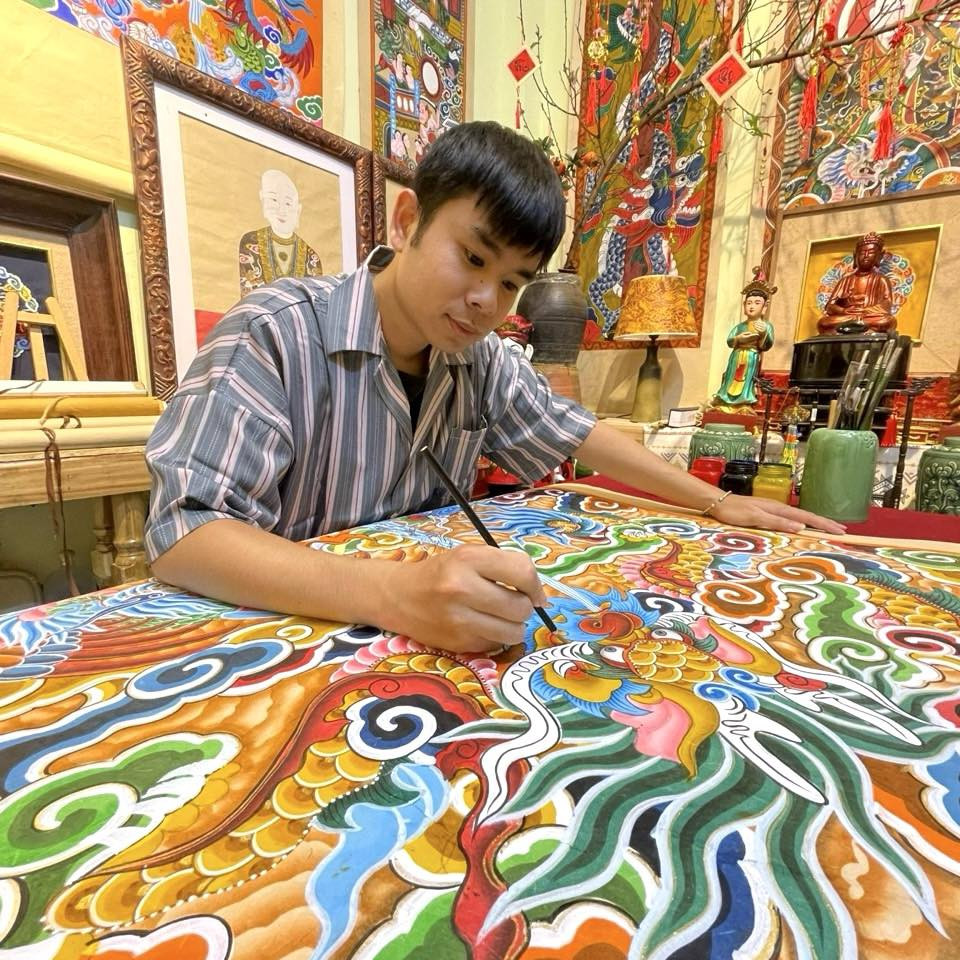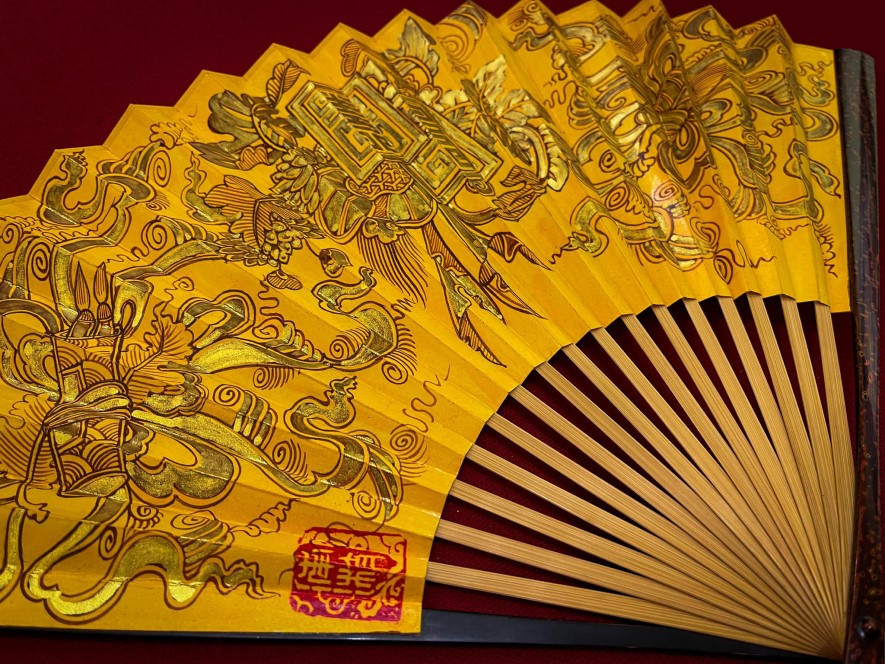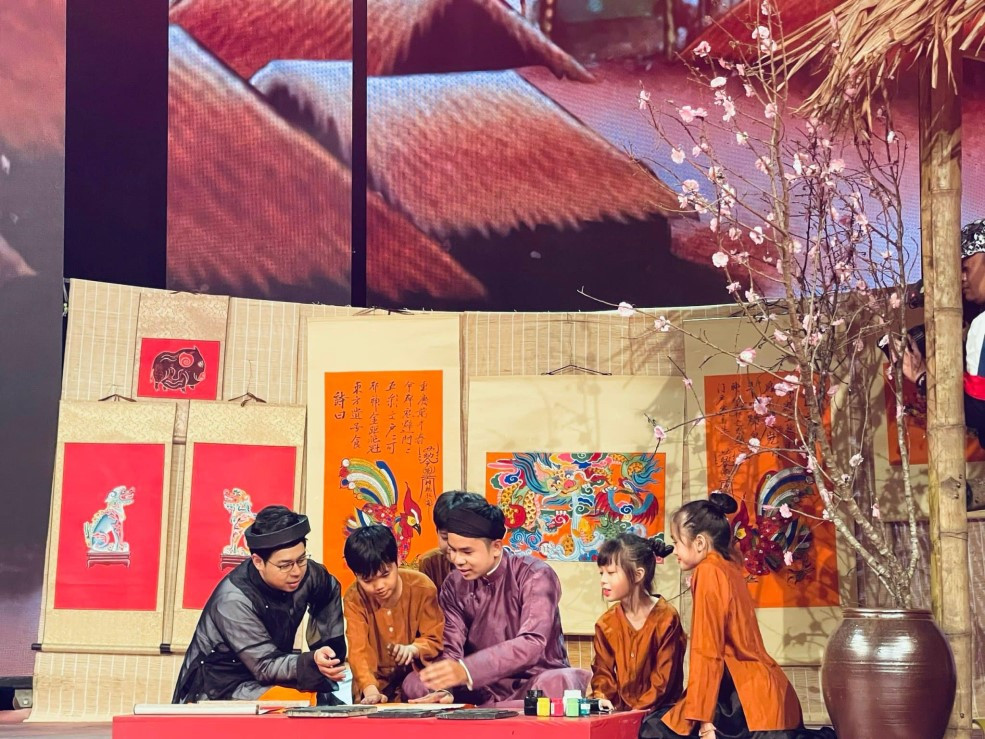As a young person with a strong background in fine arts and a large network of contacts with many artisans, Hanoi-based artist Nam Chi is always concerned about finding ways to revive folk paintings that are in danger of disappearing.
Hanoi-based artist Nam Chi (1996) gently applied his brush, outlining the silvery paint on the cloud pattern of the Dragon and Fairy fan. On the yellow paper background, traditional patterns shine, showing the shape of a handmade product in the making, both known and strange.
Passion for traditional art
Nam Chi (whose birth name is Nguyen Van Bac) has been involved in folk painting for nearly 10 years. From the beginning, he wondered how to diversify the rich heritage of Vietnamese folk paintings and make them accessible to young people.
"I think the making of folk paintings requires creativity, from the structure and lines to the colors, to make them fit contemporary tastes. I would like to add more patterns to the collection of Vietnamese folk paintings," Chi said.
 |
| Painter Nam Chi combines the quintessence of different schools of folk painting to create a new style. Photo courtesy of the artist |
While still in elementary school, Nam Chi was accidentally introduced to traditional fine arts. Since then, he has fallen for folk paintings because of their bright colors and typical Vietnamese themes. Over the years, his feelings for traditional painting continued to grow, prompting him to learn the techniques of folk painting.
Since high school, Nam Chi has spent a lot of time reading materials on papermaking techniques, color mixing, and Hang Trong folk painting - a traditional art from Hanoi.
He carefully took note of every step of the process as for him, paper and paint are the backbone and soul of the painting.
He uses four to six layers of do (poonah) paper to provide durability and thickness for the canvas. The paper glue is made from glutinous rice flour, removing all the glucose to prevent termites and insects. There are even paintings in which he uses the technique of painting with gold powder on the canvas, something very few artists can do today.
His passion for fine arts found its way to fulfillment when Nam Chi passed the graphic design exam at the Vietnam University of Fine Arts. He gained a specialized understanding of fine arts and the fundamentals of traditional fine arts through years of academic training. The more he studied and researched, the more he became knowledgeable about the distinctive qualities of Vietnamese art.
Creating a new way
To pursue his passion for traditional art, Nam Chi had to meet a number of rigorous requirements for this line of paintings. "I had to delve into Google, YouTube, and many second-hand bookstores to find books on folk painting," he said.
 |
| A paper fan with fairy and dragon patterns by Nam Chi. Photo courtesy of the artist |
He also spent time in the field, visiting artisans to learn traditional painting techniques. Due to the nature of traditional painting as a profession passed down from father to son, it was difficult for him to gather and put into practice the ancient knowledge.
Materials from the French colonial period and foreign-language documents on Vietnamese folk painting, such as L'imagerie Populaire Vietnamiene (Vietnamese Folk Painting) by Maurice Durand, have been useful to him.
Nam Chi pioneered the expression of artistic elements in Hang Trong painting on the folk paintings of the Dao people in the northern mountainous region.
"With the desire that the Dao people's worship painting be known not only as a means of practicing rituals and beliefs but also as a piece in the flow of Vietnamese folk art, I tried to innovate the way of creating this type of painting to make it suitable for young art lovers," Nam Chi said.
The standards for creating images of gods and Buddhas in Hang Trong folk paintings were applied to his paintings so that they would seem more familiar to the public.
In addition to the ingenious drawings, Nam Chi's use of color is equally masterful. The bright colors and the strong contrast between hot and cold colors seem to communicate his youthfulness, unconventionality, and burning passion for traditional culture.
 |
| Nam Chi (center) teaches children about Hang Trong folk painting. Photo courtesy of the artist |
According to researcher Nguyen Duc Binh, Nam Chi is well-trained in fine arts, especially graphic arts, which guarantees his creativity without making traditional painting grotesque.
"It can be said that Nam Chi is blessed with the ability to perceive art and excellent creative thinking in folk paintings. For this reason, his creations with paintings such as Hang Trong, Kim Hoang, and other painting schools, and most recently the Dao people's worship painting, are all groundbreaking, but not far from traditional aesthetics, while at the same time receiving high appreciation from experts," Binh said.
Researcher Nguyen Thi Thu Hoa, Director of the Hanoi Museum of Ceramics and head of many folk painting restoration projects, agreed.
"Nam Chi is not the heir to the secrets of folk painting. He is a self-taught artist who has sought creative ways to give traditional folk paintings a contemporary feel. Young artists like Nam Chi are the ones who will continue to write the history of folk painting," Hoa said.
Hanoitimes